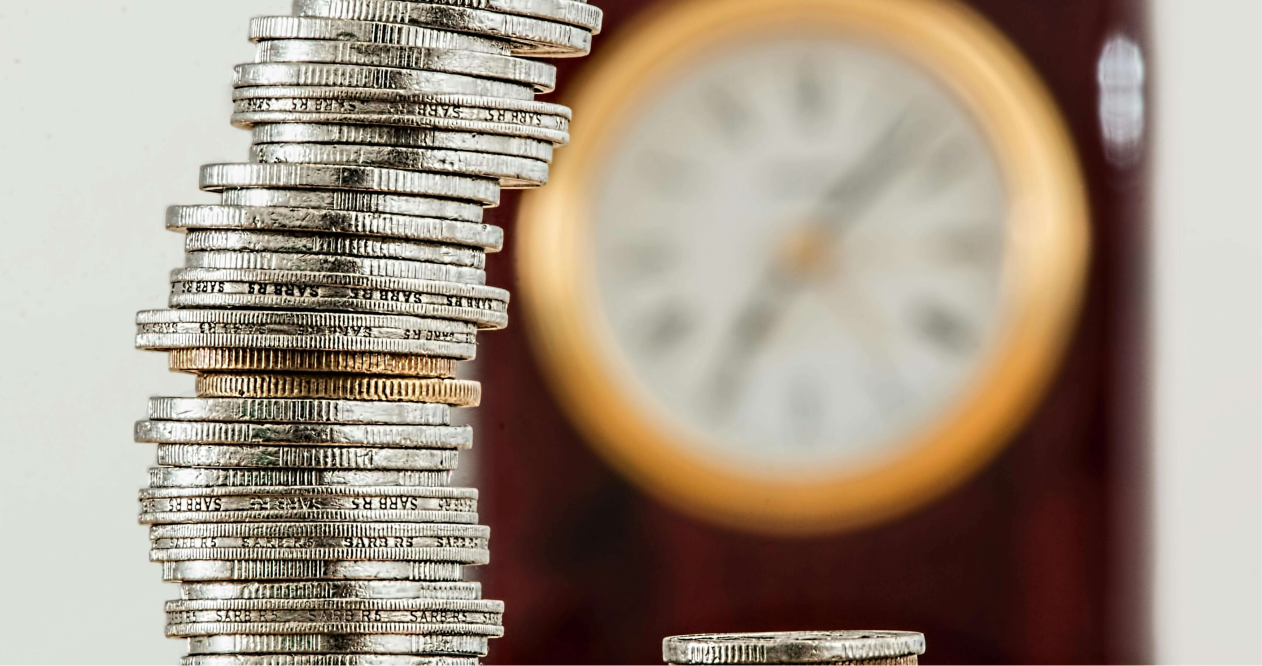Have you ever tried to read your electricity meter but felt completely overwhelmed by the task? You're not alone. Many homeowners and business owners struggle with this seemingly complex task. Understanding how to read your electricity meter can help you easily monitor your electricity usage, identify potential issues, and even save on your energy bills.
In this guide, we'll break down everything you need to know about reading your electricity meter, from identifying different types of meters, to learning step-by-step instructions for both analogue and digital meters. By the end, you'll be equipped with the knowledge to take control of your energy consumption.
Types of electricity meters in Australia
Australian homes and businesses can have several different types of electricity meters, each designed to measure electricity usage differently. Knowing which type you have is the first step.
Analogue meters
Analogue meters, also known as electromechanical meters, are the traditional type you'll find in many older properties. They have a series of dials that record electricity usage.
Digital meters
Digital meters display electricity usage in numbers on an LCD screen. These meters are more accurate and easier to read than analogue meters.
Smart meters
Smart meters are the latest technology, offering real-time data monitoring and remote readings. They help with more efficient energy management and typically support time-of-use (TOU) energy tariffs.
How to locate your electricity meter
Before you can read your electricity meter, you need to find it. Here are some common places to look.
Outside your home or business premises
Many properties have their electricity meter box installed outside, often near the main fuse box or electrical panel.
In the garage
For some properties, especially newer constructions, the electricity meter might be located in the garage, often near the entrance.
Inside utility closets
In apartment buildings or older properties, the electricity meter could be inside a utility closet or basement.

Step-by-step guide to reading an analogue meter
Reading an analogue meter can be tricky if you're not familiar with its dials. Here's how to do it accurately:
Understanding the dials
Analogue meters typically have four or five dials, each representing a digit in the meter reading. The dials rotate in opposite directions.
Reading the dials
- Start from the leftmost dial and note the number it points to.
- If the dial is between two numbers, record the lower number.
- Repeat this for all dials.
Recording the reading
Combine the numbers from each dial to get your total meter reading. This is your electricity usage in kilowatt-hours (kWh).

Step-by-step guide to reading a digital meter
Digital meters are straightforward and less prone to human error. Follow these steps:
Locate the display
Find the LCD screen on your digital meter. It should show a series of numbers.
Read the numbers
- Ignore any leading zeros.
- Record the numbers as they appear, which represent your total electricity usage in kilowatt-hours (kWh).
Verify the reading
Double-check the numbers for accuracy. Digital meters usually have a clear display, so this is much easier than analogue.

Step-by-step guide to reading a smart meter
Reading a smart meter is usually straightforward, thanks to its user-friendly interface and real-time data display. Here’s how to do it:
Accessing the display
- Locate the smart meter’s display panel, which is typically on the front. It may have a button to wake it up if the screen is not active.
Understanding the readings
- Smart meters often display multiple readings, such as total usage, current usage, and sometimes even time-of-use data.
- Look for the total usage (kWh), which includes all consumption since the last reset. This is usually prominently displayed.
Recording the reading
- Write down the total energy usage displayed. Ensure to take note of any units (kWh) mentioned.
- If available, check additional information, such as your current power usage in real-time. This will help you understand peak usage times.
Checking additional features
- Some smart meters allow you to view historical data or access account details through a connected app. Explore these options if your meter supports them for better energy management insights.

How does an electricity meter impact my electricity bill?
Your electricity meter plays a crucial role in determining your electricity bill:
Measuring your usage
The meter records how much electricity you use over a billing period. This usage is then multiplied by your tariff to calculate your bill.
Impact of accurate readings
Accurate meter readings ensure you only pay for the electricity you use. Regular readings can help you identify unusual spikes in usage.
Correct billing
If your meter isn't working correctly, it could lead to inaccurate billing. Regular checks help avoid this issue.
Understanding Time-of-Use (TOU) meters
Time-of-Use meters charge different rates for electricity based on the time of day you use it:
Peak and off-peak rates
Electricity is more expensive during peak hours, typically when demand is highest, and cheaper during off-peak times when demand is lower. Understanding these rates can help you save money by adjusting when you use electricity. For example, a golf club might charge their golf carts at night as this is generally an off-peak period and will significantly reduce their energy costs.
Benefits of TOU meters
Time-of-Use (TOU) meters encourage energy consumption during off-peak hours, helping to reduce strain on the electricity grid and lower your bills. These meters provide more accurate billing by charging different rates for electricity used during peak and off-peak times, ultimately promoting more efficient energy usage patterns.
Managing TOU meters
By shifting energy-intensive activities such as laundry, cooking, and charging electric vehicles to off-peak times, you can make the most of TOU rates. Additionally, using programmable thermostats and smart energy devices can help automate this process, ensuring that you maximise your savings without significantly altering your daily routine.

Benefits of regular meter readings
Regularly reading your electricity meter comes with several benefits:
Accurate billing
Ensuring your bills reflect your actual usage prevents overcharging and helps you manage your finances more effectively. By regularly checking your consumption and comparing it to your billing statements, you can avoid unnecessary expenses and ensure accuracy in your payments.
Energy management
Monitoring your usage helps identify patterns and areas where you can save. By keeping track of your consumption, you can pinpoint specific habits that contribute to higher costs and take proactive steps to reduce waste, ultimately leading to better efficiency and savings over time.
Detecting issues
Regular readings can alert you to potential issues such as faulty machines or appliances that might be consuming excess power. This can help you identify and address inefficiencies early, ultimately saving on energy costs and preventing potential hazards. Consistently monitoring your energy usage ensures that your home or business is running smoothly and safely.
Common issues and solutions with electricity meters
Electricity meters are generally reliable, but problems can arise:
Faulty readings
Sometimes, meters can malfunction, leading to incorrect readings that can affect the accuracy of your data. Regular checks and maintenance help spot these issues early on, ensuring that your equipment remains reliable and providing you with precise measurements.
Accessibility
In some properties, meters might be hard to access, often tucked away in basements, closets, or behind other equipment. It's important to ensure you know where your meter is located and that it's easy to reach. If your meter is in a difficult-to-reach spot, consider clearing the area or consulting a professional for better accessibility.
Meter tampering
Tampering with meters is illegal and can result in severe penalties. If you notice any signs of meter tampering, such as broken seals or unusual behavior in your energy usage, report it to your energy provider immediately to ensure safety and compliance.

How to submit your meter readings
Submitting your readings is essential for accurate billing:
Online submission
Many energy providers now offer the convenience of submitting your meter readings online, either through their user-friendly websites or dedicated mobile apps. This modern approach not only saves time but also helps ensure that your energy consumption is accurately reflected in your bills, allowing for more efficient management of your energy usage.
Phone submission
You can also call your provider's customer service to submit your readings, where a representative will assist you in ensuring that your information is recorded accurately. They can also answer any questions you may have about the process or provide guidance on how to properly take your readings for future submissions.
Automated systems
Some newer smart meters are equipped with advanced technology that automatically sends real-time readings to your service provider. This innovative feature eliminates the need for manual submission, saving you time and ensuring that your energy consumption data is always up-to-date.

Tips for accurate electricity meter readings
To ensure your readings are precise, follow these tips:
Consistent timing
To ensure you collect consistent and accurate data, it's important to read your meter at the same time each month. By establishing a routine, you can better track your consumption patterns and identify any fluctuations in usage over time, making it easier to manage your energy bills effectively.
Clear visibility
Make sure you have good lighting when reading the meter to avoid mistakes, as proper lighting helps ensure that you can clearly see the numbers and any potential fluctuations. Adequate lighting not only reduces the risk of errors but also allows you to double-check your readings for accuracy, giving you greater confidence in your results.
Double-check
Always double-check your readings before submitting them to ensure accuracy. Taking the time to verify your data not only helps you catch potential errors but also boosts your confidence in the information you provide.
Frequently asked questions about electricity meters
What should I do if my meter reading seems incorrect?
If your reading seems off, recheck it. If it still seems wrong, contact your energy provider for assistance.
How can I submit my meter reading online?
Most providers have a portal or app for online submissions. Log in, enter your reading, and submit.
Are there tools to help read my electricity meter accurately?
Yes, there are various apps and tools (usualy provided by your retailer) specifically designed to assist you in reading and accurately recording your meter readings. These applications often come with features such as reminders for when to take readings, tutorials on how to read different types of meters, and the ability to track your usage over time. Some even allow you to upload photos of your meter for easy reference and comparison, ensuring that you can keep accurate records and manage your energy consumption effectively.
What are the benefits of reading my electricity meter regularly?
Regular readings ensure accurate billing, help manage energy usage, and detect potential issues early.
How do I read a digital electricity meter?
Check Your Display Type -Some digital meters cycle through different displays. Ensure you're reading the one marked as kWh.
Note the Reading - Record the numbers displayed on the kWh screen. This is your current meter reading.
Compare with Previous Readings - To calculate usage, subtract the previous reading from the current one. This gives you the amount of electricity used since the last reading.
Zembl have been saving Australian businesses time and money on their energy bills for over 15 years.
If you think you're paying too much for business energy, fill in our form below, and one of our Energy Experts will give you a call to discuss your options.





.png)


.png)

.svg)
.svg)